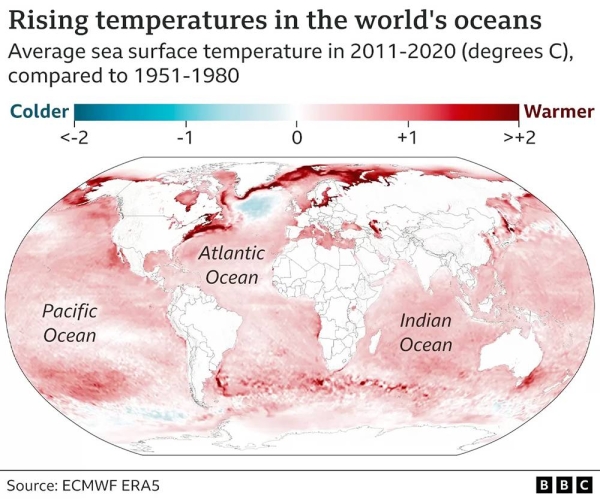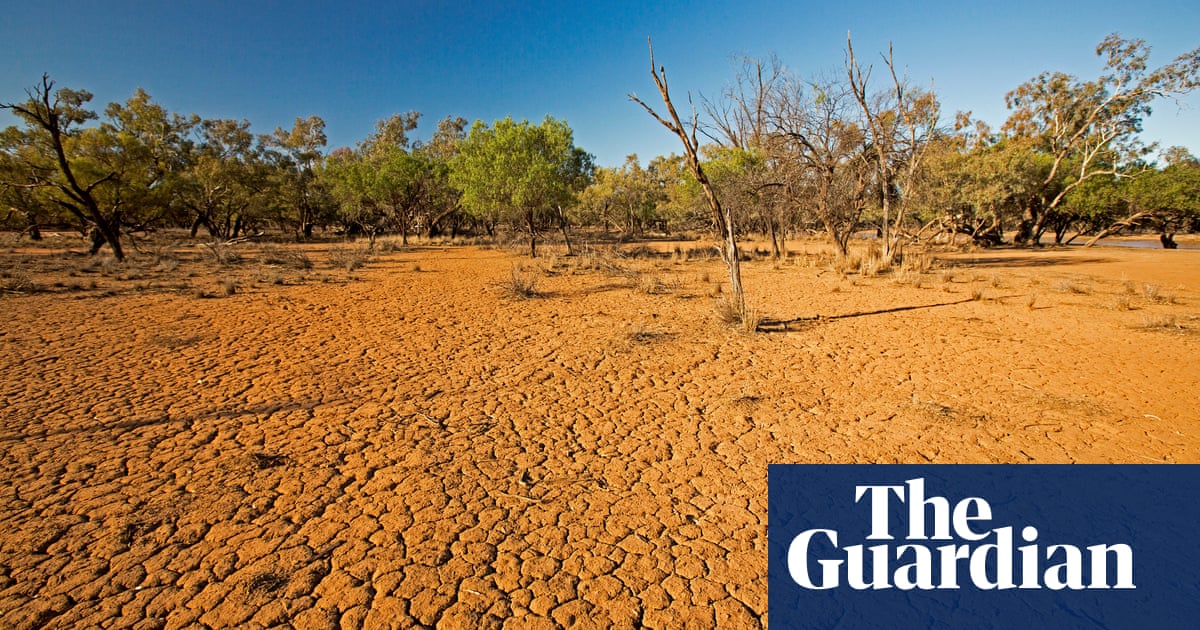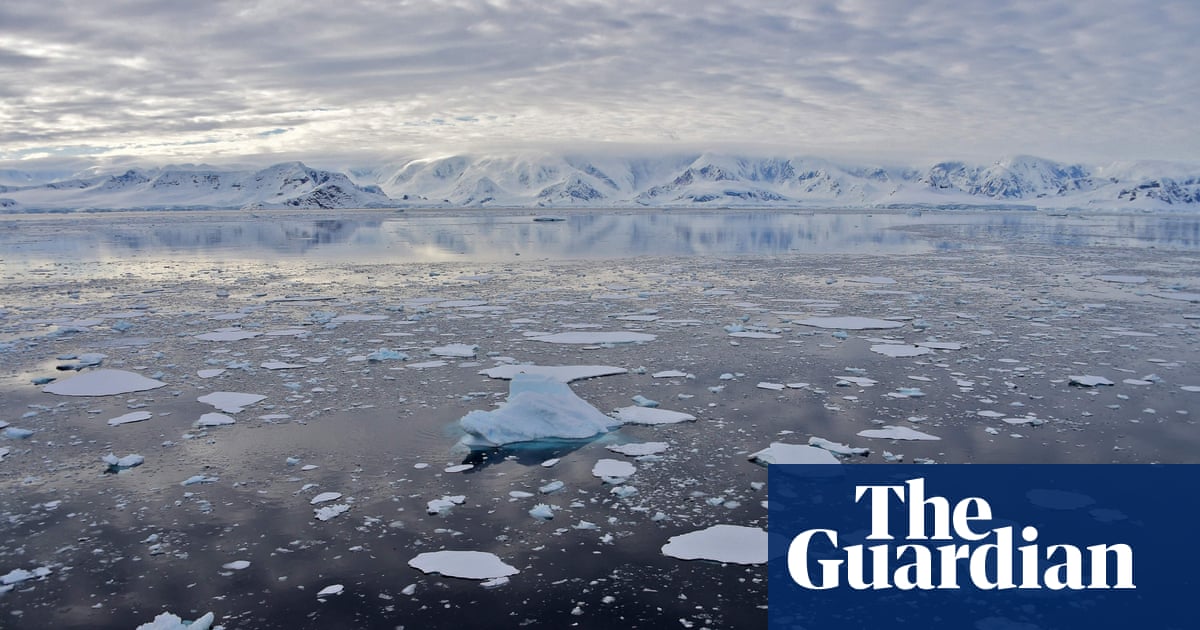
A recent, rapid heating of the world’s oceans has alarmed scientists concerned that it will add to global warming.
This month, the global sea surface hit a new record high temperature. It has never warmed this much, this quickly. Scientists don’t fully understand why this has happened.
But they worry that, combined with other weather events, the world’s temperature could reach a concerning new level by the end of next year.
Experts believe that a strong El Niño weather event — a weather system that heats the ocean — will also set in over the next months.
Warmer oceans can kill off marine life, lead to more extreme weather and raise sea levels. They are also less efficient at absorbing planet-warming greenhouse gases.
Almost all the world’s sea surface has warmed, with especially strong warming in the Arctic of more than two degrees Celsius in places. There is a localized area of cooling southeast of Greenland.
An important new study, published last week with little fanfare, highlights a worrying development.
Over the past 15 years, the Earth has accumulated almost as much heat as it did in the previous 45 years, with most of the extra energy going into the oceans.
This is having real world consequences — not only did the overall temperature of the oceans hit a new record in April this year, in some regions the difference from the long term was enormous.
In March, sea surface temperatures off the east coast of North America were as much as 13.8C higher than the 1981-2011 average.
“It’s not yet well established, why such a rapid change, and such a huge change is happening,” said Karina Von Schuckmann, the lead author of the new study and an oceanographer at the research group Mercator Ocean International.
“We have doubled the heat in the climate system the last 15 years, I don’t want to say this is climate change, or natural variability or a mixture of both, we don’t know yet. But we do see this change.”
One factor that could be influencing the level of heat going into the oceans is, interestingly, a reduction in pollution from shipping.
In 2020, the International Maritime Organization put in place a regulation to reduce the sulfur content of fuel burned by ships.
This has had a rapid impact, reducing the amount of aerosol particles released into the atmosphere.
But aerosols that dirty the air also help reflect heat back into space — removing them may have caused more heat to enter the waters.
Another important factor that is worrying scientists is the weather phenomenon known as the El Niño Southern Oscillation.
For the past three years this naturally occurring event has been in a cooler phase called La Niña, and has helped keep global temperatures in check.
But researchers now believe that a strong El Niño is forming which will have significant implications for the world.
“The Australian Bureau’s model does go strongly for a strong El Niño. And it has been trending that way and all the climate models have been trending that way to a stronger event,” said Hugh McDowell from Australia’s Bureau of Meteorology.
McDowell cautioned that predictions at this point of the year are less reliable. Other researchers are more bullish.
A coastal El Niño has already developed off the shores of Peru and Ecuador and experts believe a fully formed event will follow with implications for global temperatures.
“If a new El Niño new comes on top of it, we will probably have additional global warming of 0.2-0.25C,” said Dr. Josef Ludescher, from the Potsdam Institute for Climate Research.
Media caption,
“The impact on the temperature is relaxed a few months after the peak of any El Niño so this is why 2024 will be probably the warmest on record.”
“And we may, we will be close to 1.5C days and perhaps we will temporarily go over.”
El Niño will likely disrupt weather patterns around the world, weaken the monsoon and threaten more wildfires in Australia.
But there are more fundamental worries that as more heat goes into the ocean, the waters may be less able to store excess energy.
And there are concerns that the heat contained in the oceans won’t stay there. Several scientists contacted for this story were reluctant to go on the record about the implications.
One spoke of being “extremely worried and completely stressed.”
Some research has shown that world is warming in jumps, where little changes over a period of years and then there are sudden leaps upwards, like steps on a stairs, closely linked to the development of El Niño.
There is some hope in this scenario, according to Karina Von Schuckmann. Temperatures may come down again after the El Niño subsides.
“We still have a window where we can act and we should use this to reduce the consequences,” she told BBC News. — BBC












